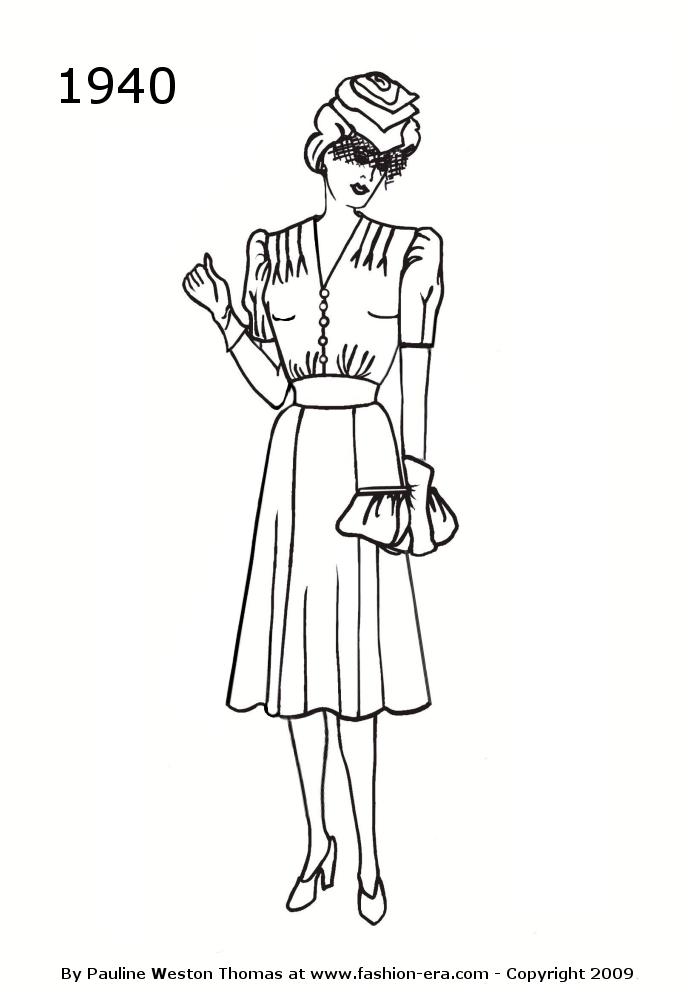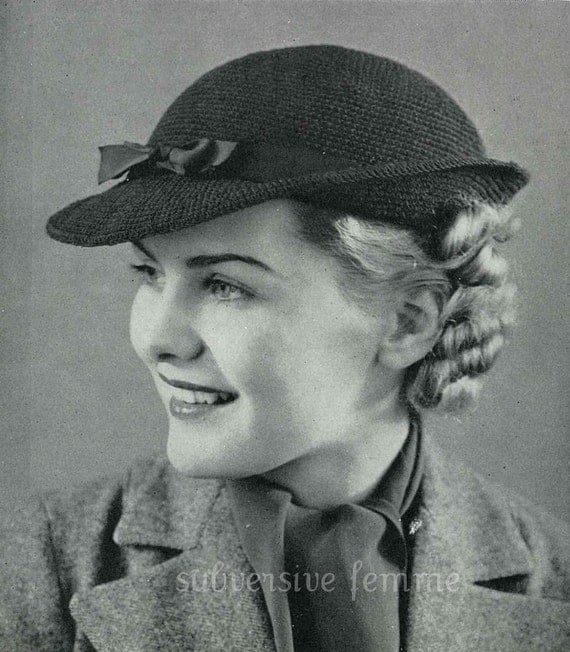Fasion Through The Decades
1940's
The 1940's saw two different styles in women's fashion. From the beginning of world war II in 1939 till the dawn of the New Look in 1947, women's fashion consisted of knee length dressed and shoulder pads, thanks to war time rationing.
Sportswear became more common and women began to mix separates.
Home-made jewellery, elaborate curls and bright lipstick made women show there flair and femininity without expense.with jackets shorter the Peplum became immensely popular. clothes were simple and practical but women still managed to look beautiful even during the hardest days of the war.
............
Rationing
Clothes rationing came into effect in Britain from 1 June 1941. It lasted until March 1949.
As with food rationing, the main aim of the scheme was to ensure fair shares. But it was also intended to reduce consumer spending, to free up valuable factory space and release workers for vital war industries.
When buying new clothes, the shopper had to hand over coupons with a 'points' value as well as money. Each item of clothing had a points value, usually displayed alongside the price. The more fabric and labour that was needed to produce a garment, the more points required.
Many women used furnishing fabrics for dressmaking until these too went on the ration. Blackout material, which did not need points, was also sometimes used. Parachute silk was highly prized for underwear, nightclothes and wedding dresses.
The 'Make do and Mend' campaign suggested ways to repair and recycle old clothes, although cheaper clothes inevitably wore out quicker than more expensive better quality clothing. The 'Utility' scheme, launched in 1943, offered a partial solution to this problem by offering consumers a range of well-designed quality and price controlled clothes.
............
Rationing
Clothes rationing came into effect in Britain from 1 June 1941. It lasted until March 1949.
As with food rationing, the main aim of the scheme was to ensure fair shares. But it was also intended to reduce consumer spending, to free up valuable factory space and release workers for vital war industries.
When buying new clothes, the shopper had to hand over coupons with a 'points' value as well as money. Each item of clothing had a points value, usually displayed alongside the price. The more fabric and labour that was needed to produce a garment, the more points required.
Many women used furnishing fabrics for dressmaking until these too went on the ration. Blackout material, which did not need points, was also sometimes used. Parachute silk was highly prized for underwear, nightclothes and wedding dresses.
The 'Make do and Mend' campaign suggested ways to repair and recycle old clothes, although cheaper clothes inevitably wore out quicker than more expensive better quality clothing. The 'Utility' scheme, launched in 1943, offered a partial solution to this problem by offering consumers a range of well-designed quality and price controlled clothes.
...........
The silhouette

The silhouette in the 40's was practical yet glamorous,shoulders were strong and there was clear waist definition in both casual and more formal wear. Clothing fit closer to the body, in part due to fabric rationing in the war years. The body was not exaggerated by these fashion silhouettes and they worked well with many body types, unlike the boyish figure of the 1920s.
...........
Nylon Stockings!
By the 1940′s, stockings had become an essential part of a woman’s attire. At the time, silk stockings were expensive and didn’t last, neither cotton or wool were dressy, and rayon sagged.
By the end of 1940, 64 million pairs of nylons had been sold. Nylons had affordability, a good fit, good looks, and mass appeal.
A year later, World War II made it near enough impossible to get a hold of the three most common sheer stocking materials – silk, nylon, and rayon. Like a lot of materials, these materials were being used in the war effort. Some women starting wearing socks folded over at the top of the ankle, but a lot of women starting applying leg makeup and would even go so far as drawing a line with an eyebrow pencil down the back of each leg to give the appearance of wearing back seam stockings.

...........
Utility Clothing
Utility clothing was produced to aid the economy and help the war effort and although not actually being of military manufacture it is arguably getting close to a 'civilian uniform'.
Utility Clothing was introduced towards the end of 1941 by the British government with several purposes in mind.
Raw materials (cloth, wool, leather etc.) were in short supply and had to be conserved. Manufactures needed to become more efficient in their working practices (Much of the skilled labour had left to fight). Clothing prices (which were increasing) needed to be kept down so that the civilian population could afford clothing of a reasonable quality.
The Utility Clothing Scheme in the large part succeeded in these aims. Utility clothing was stamped or labelled with a utility mark (CC41), the two C's looking more like 'Pack Man' figures than letters, in an effort possibly to hide its true meaning i.e. Civilian Clothing 1941.
Utility Clothing was introduced towards the end of 1941 by the British government with several purposes in mind.
Raw materials (cloth, wool, leather etc.) were in short supply and had to be conserved. Manufactures needed to become more efficient in their working practices (Much of the skilled labour had left to fight). Clothing prices (which were increasing) needed to be kept down so that the civilian population could afford clothing of a reasonable quality.
The Utility Clothing Scheme in the large part succeeded in these aims. Utility clothing was stamped or labelled with a utility mark (CC41), the two C's looking more like 'Pack Man' figures than letters, in an effort possibly to hide its true meaning i.e. Civilian Clothing 1941.


Utility Jacket

Utility shoes
..........
Factory attire
Silhouettes were austere, but even in suits or factory overalls, curls and bright lipstick kept the look feminine.

...........











